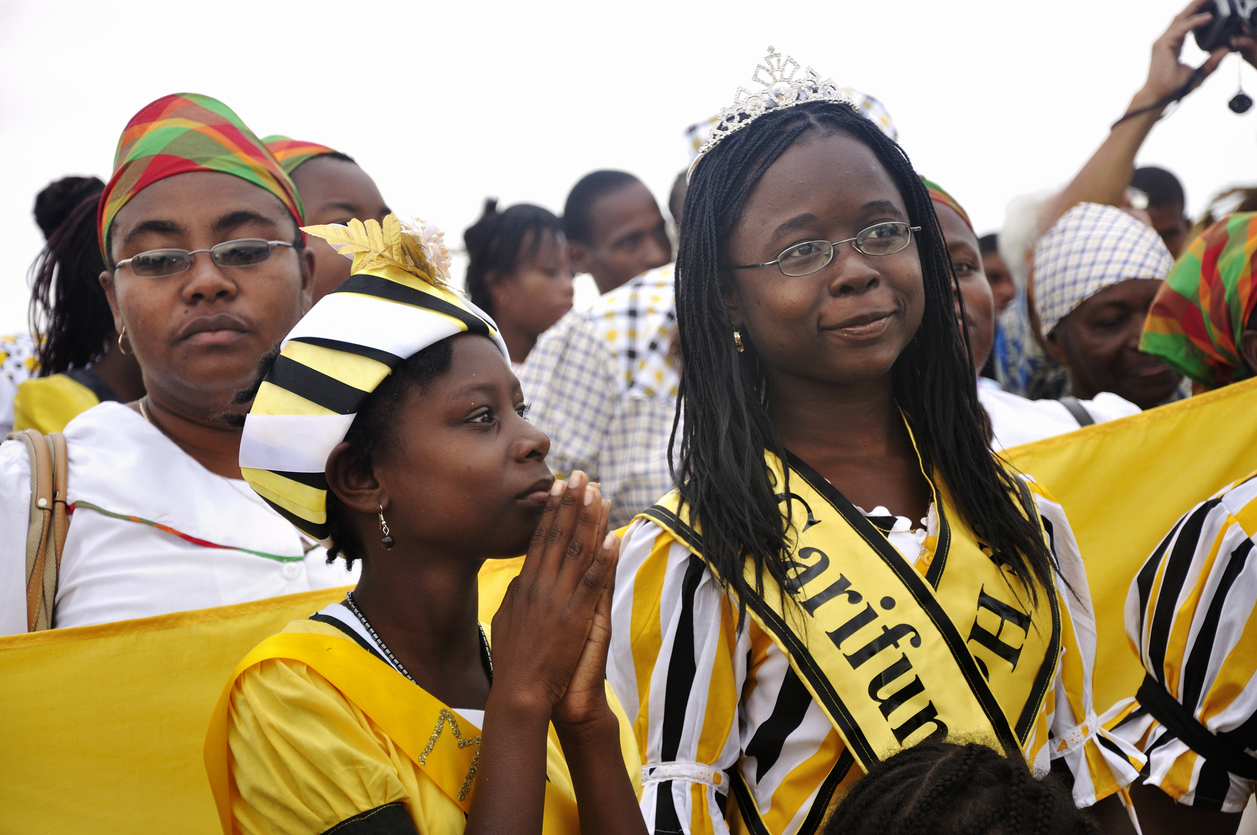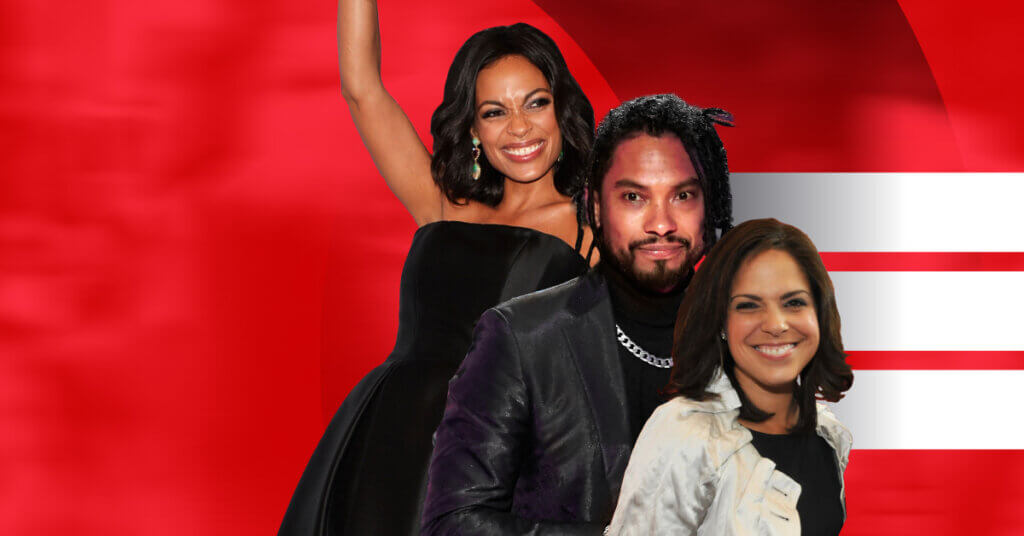It’s Black History Month. Here are Five Ideas for Teaching About Afro-Latino Identity

Defining what it means to be Latino or Hispanic has always been a curious process. Neither term refers to a particular race, but rather an ethnic group made up of various races.
According to the Pew Research Center, an estimated 25 percent of the US Latino population identifies as Afro-Latino. Since February is Black History Month, the Progress Report has some ideas below for educators to recognize, celebrate, and incorporate Afro-Latino history into black history lessons.
The following is a list of ideas for doing so:
1.Can You Name Some Famous Afro-Latinos?

Last year, Remezla published a list of eight Afro-Latinos who made their mark in a variety of ways. It mentions, for example, Gwen Ifill, a veteran journalist who passed away in November 2016. She’s a perfect example of how one’s combined Latino and African identities can go under the radar. Without a Spanish name, it would be hard to have guessed that her father was Panamanian. But Ifill was a trailblazer in the push for diverse representation in American newsrooms.
During her four-decade career, she worked as a reporter for The New York Times, The Washington Post, and as a news host for NBC and PBS. In 2008, she also became the first black woman to host a vice presidential debate. Here’s a 2016 video tribute called Dear Gwen: Letters from Female Journalists of Color She Inspired.
Talking about the Harlem Renaissance? Delve into the contributions of Puerto Rican historian Arturo Schomburg. He dedicated most of his life to educating the public about the diverse origins and societal contributions of people who make up the African diaspora. In fact, in 1925 he set up a library in New York City dedicated to this topic. Today the Schomburg Center for Research in Black Culture is an integral part of the New York Public Library.
There are plenty more examples listed in the Remezlca story, and Teachers Pay Teachers also offers a Spanish-language slide presentation on 20 Notable Afrolatinos.
QUIZ: Can your class identify a recent Afro-Latino changemaker in the world of politics and activism – perhaps a young influencer?
2. Discover Latin America’s Lesser-Known Black Communities

The slave trade in the Americas led to the abduction of between 9 and 11 million Africans from their homelands to work plantations in Europe and the New World. In an effort to make this history more relevant to the American public, in 2011, African American historian Henry Louis Gates worked with PBS to produce a documentary series called Black in Latin America. It notes that there are more people of African descent living in Latin America and the Caribbean than in any other part of the world outside Africa. And of course, many people of that ancestral trajectory have made their way to the United States.
With that in mind, you could produce lesson plans highlighting particular cultural or regional experiences of Afro-Latinos. For example, most people identify Afro-Latinos as people who came from Spanish-speaking Caribbean islands such as Cuba, Puerto Rico, and the Dominican Republic. But as mentioned above, virtually all Latin American countries have historic Afro communities.
Honduras’ Atlantic Coast is largely made up of people known as the Garifuna. Originating in the southeastern islands of the Antilles, this group was made up of shipwrecked and escaped slaves who integrated into the area’s native Carib population, creating a language all their own.
Fearing that the Garifuna would rise up, in the 1780s colonizers expelled them to present-day Belize and Honduras. They are celebrated for preserving their African and native Caribbean identities through their unique linguistic patterns and music.
Ever heard of the song “La Bamba,” popularized by 1950s Mexican pop crooner Ritchie Valens? Before it was a rock song, it was a song from the son jarochogenre, whose origins trace back to Afro people in Mexico’s Veracruz region.
The BBC World Service offers a 30-minute documentary on the Afro-Mexicans. More on their history, culture, and societal experience within Mexico can be found in the 2017 book Mexico’s Nobodies: The Cultural Legacy of the Soldadera and Afro-Mexican Women.
And while it’s too early to see the whole thing, the upcoming Mexican movie La Negradais already receiving media attention as the first major fiction film focusing entirely on the experiences of black Mexicans. The trailer doesn’t tell much of the plot, but it does show from the onset how in Mexico, some ethnic groups are so forgotten that even people inside the country don’t know they exist. Ironically, Mexico’s first liberator in the fight for independence from Spain was a black slave named Gaspar Yanga.
And amid all the discussions of US-Mexico history, here’s a detail that is vastly overlooked: A University of Texas professor investigating the routes of the Underground Railroad discovered that somewhere between 5,000 to 10,000 people may have slipped across Texas’s southern border and into Mexico to escape slavery.One escaped slave named William Elliseven became a millionaire.
QUIZ: There are some groups of Afro-Latinos on the Caribbean or Atlantic side of Mesoamerica who speak English, not Spanish as a first language. Can you find out who they are, what countries they reside in, and how they came to those locations?
3. Feel the Music

“Music helps us share ourselves—our dignities and sorrows, our hopes and joys,” noted former First Lady Michelle Obama during a surprise appearance at this year’s Grammy Awards. “It allows us to hear one another. Music shows us that all of it matters—every story within every voice, every note within every song.”
Her speech made reference to the African-American styles of Motown she grew up with and the R&B and hip hop that she says carried her through the last decade. But the same could easily be said of the African influence on Latin American and Caribbean music.
Teaching a Spanish class? Why not pull up some music that reflects the Afro-Latino experience? The website Teachers Pay Teachers has an Afro-Latino Song of the Day section, and this Remezcla article features seven favorites from across the Americas with texts about their significance. The record labels Putumayo,Luaka Bop, and Fania can take you even further into those genres. Just dig around on their websites for albums, video clips, and texts.

Is the music starting to move you? Get up and dance! From merengue and salsa and rumba to reggaetón, just about every popular Latin American dance genre has an Afrobeat at its base—even South American tango. Listen to the beats, try moving to them. Can you imagine how they came to be? Google African influence on these styles and see what comes up.
QUIZ: Which Afro-Latina just won a Grammy? Does she make any references to her bicultural identity in her songs? Which ones?
4. Take a Linguistics Lesson

There is a widespread misperception that African people lost their identities during the Transatlantic Slave Trade. It’s true that in many cases slaves were denied the right to practice their cultural or religious traditions and their native languages were suppressed, but not always.
In fact, in Spanish speaking countries like Cuba, slaves developed African cultural houses known as cabildos which served as spaces to socialize and engage in sacred rituals, oftentimes in languages like Yoruba that originated in their ancestral African homeland.
In other cases, slaves were required to attend the same churches as the colonizers, prompting them to identify the qualities and colors of certain Catholic saints with orishasor deities they knew in Africa.
Ever wondered about Cuban or Dominican Santería, Brazilian Candomblé or Haitian Vodoun? While they aren’t identical, each of these religions traces its origins to West Africa, so a search of saints and orishas will show the commonalities between Afro-American peoples regardless of whether their ancestors came to countries that speak Spanish, Portuguese, French, or Creole.

Draped in red, the Virgin of Santa Barbara is often identified with Chango, an African deity representing fire, iron, and war. The Virgin of Regla, historically a black virgin in European tradition, is often identified with Yemaya, an African goddess associated with water. Try changing the spellings while googling these deities: Chango to Shango or Xango, Yemaya to yemoja or lemanjá. What colors and characteristics do they share around the Americas?
In addition to learning how the names of important African deities have transferred from one region to another, you can learn key Yoruba phrases that you might hear on both sides of the Atlantic. Need some phonetic assistance? Try videos like this.
What ideas or stereotypes have you grown up hearing about these spiritual practices? How does learning about them change your perception? Are there any botánicas in your community? Have you ever walked in to learn more from the shop keeper?
QUIZ: What major US city shares similar black cultural ties in music and religion with to the aforementioned black communities in Latin America and the Caribbean? Can you find out why that is?
5.Bringing it Back Home

Education helps us look beyond stereotypes and see our interconnectedness as people. Get into small groups and discuss what you’re learning about black and Latino history. What are some of the stereotypes you had before engaging in these class activities? How has your perspective changed? What are three things you can do to raise awareness about and show support for Afro-Latino identity this month?
– UnidosUS Data & Impact Manager Rebeca Shackleford and Senior Program Manager Sabrina Terry contributed to this report.




